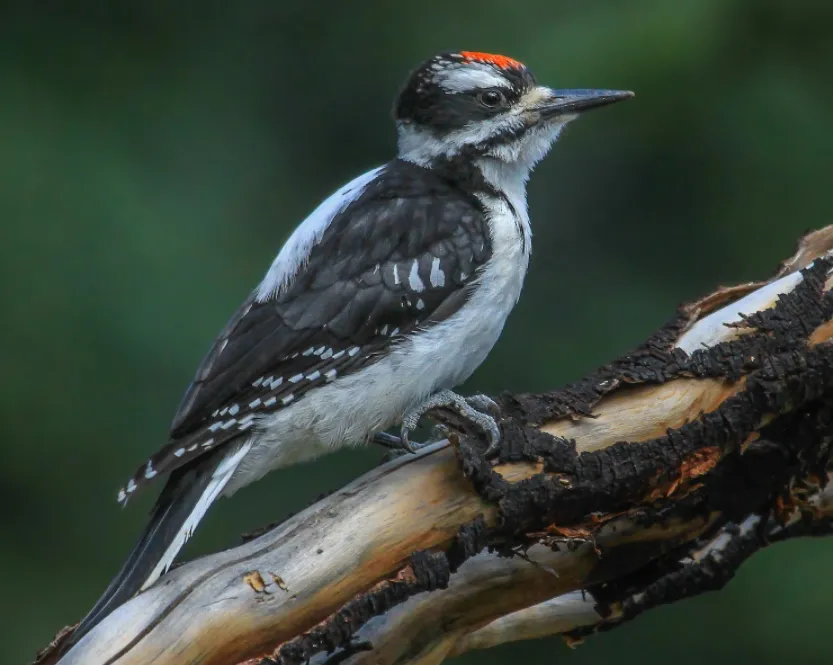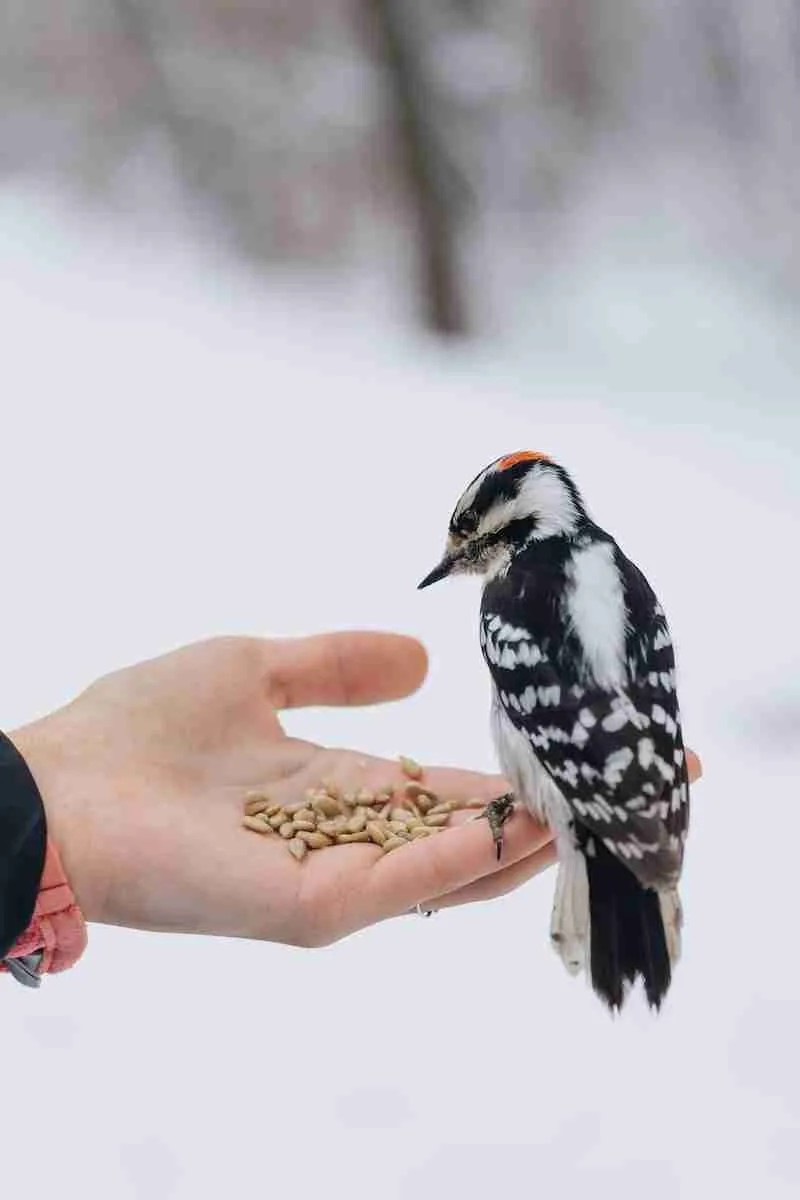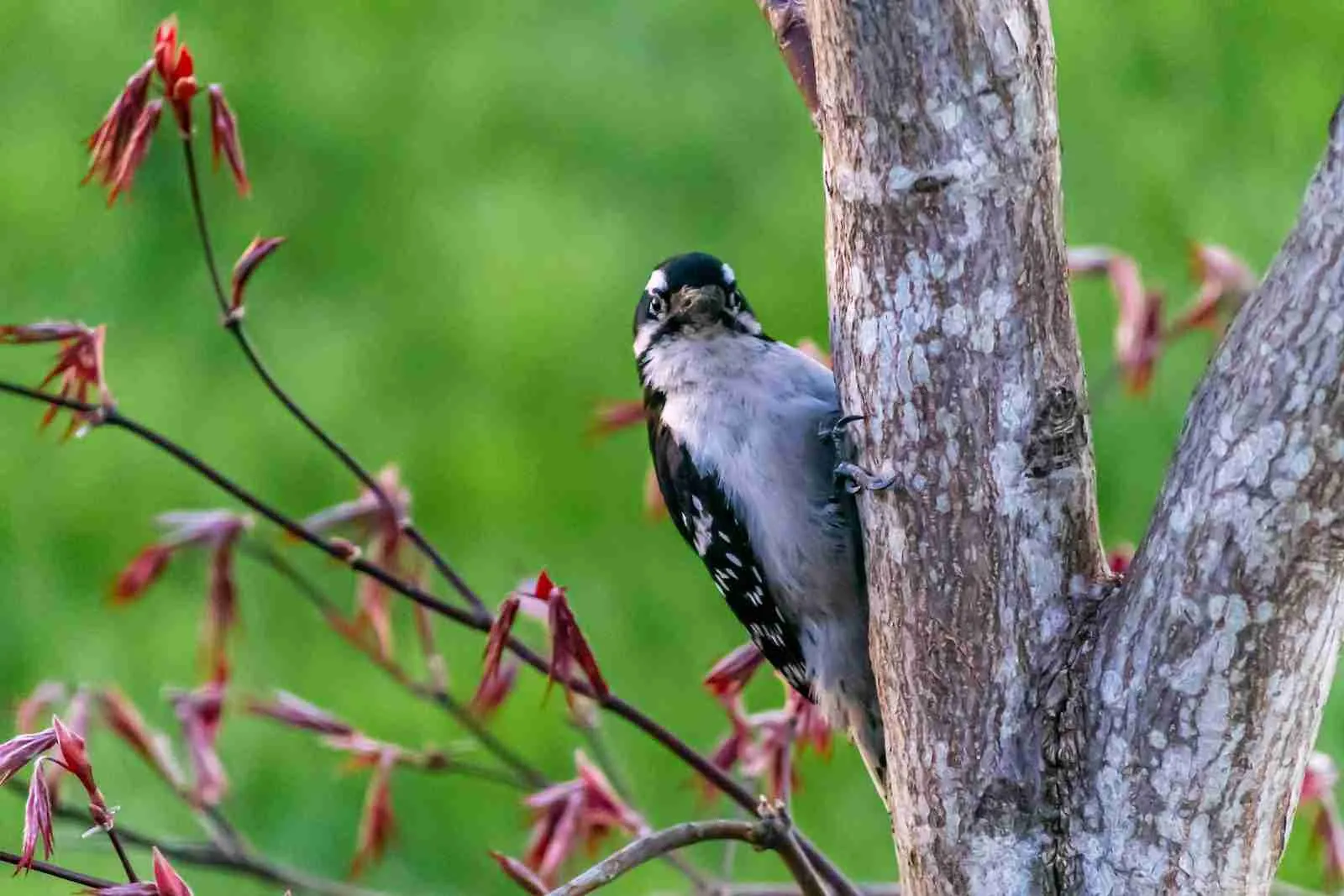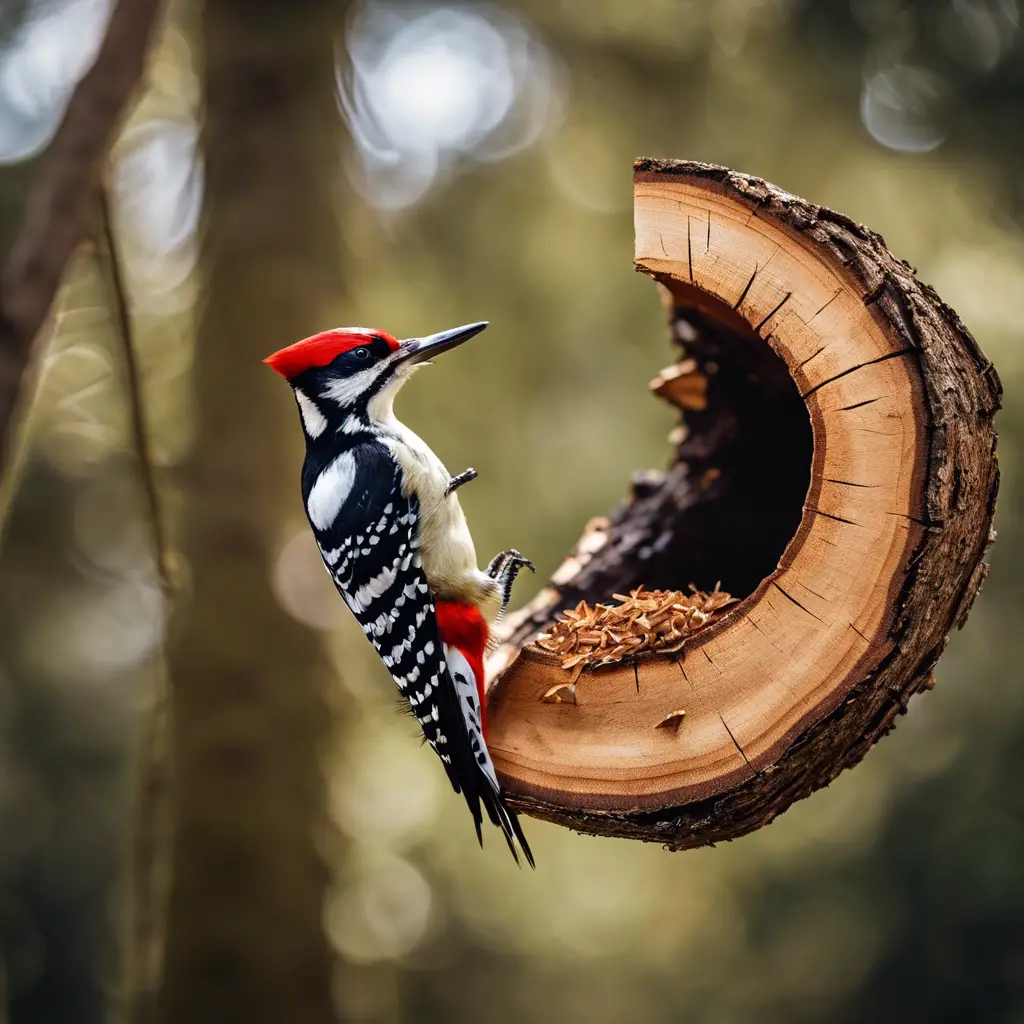We’ll go through the most common woodpeckers in Connecticut with illustrations and essential information. Only reliable sources were used, and the data were double-checked by an ornithologist.
There are a few different types of woodpeckers that call Connecticut home: the hairy, downy, red-headed, and pileated woodpecker. Each of these birds has its own unique characteristics and habits. In this blog post, we will discuss each of these four species in detail. We’ll tell you where to find them in the state, what they eat, and how you can identify them.
Most Common Woodpeckers of Connecticut
Red-headed Woodpecker
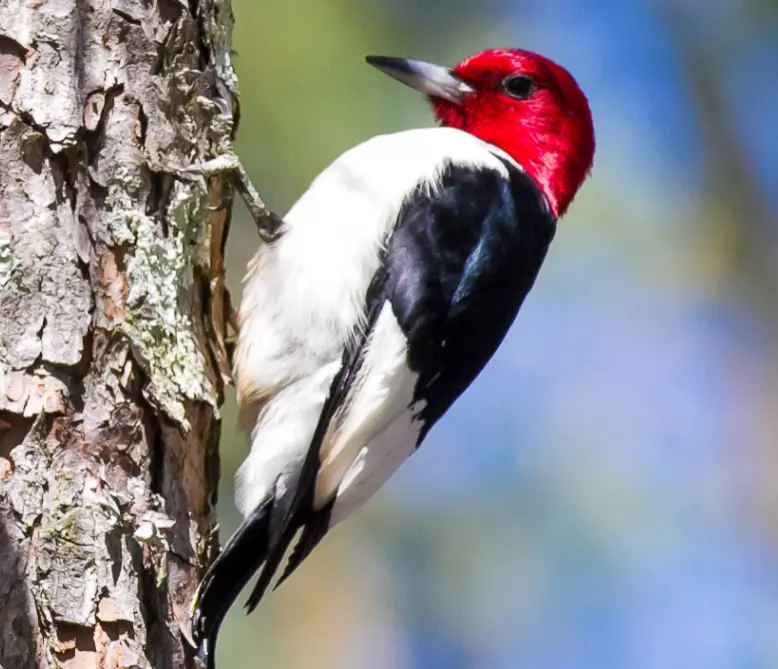
The red-headed woodpecker is a medium-sized bird that is found in North America. They are easily identifiable by their bright red head and black body. They have a long, sharp beak that they use to peck at trees in search of food. Red-headed woodpeckers eat insects, nuts, and seeds.
Red-headed woodpeckers are usually seen in open areas near forests. They can be found in both rural and urban areas. These birds are common in Connecticut. They can be seen year-round, but they are most active during the spring and summer months.
Red-headed woodpeckers are known for their loud calls. They make a variety of sounds, including a loud “pik-a-pik” call. These birds are also known for their acrobatic abilities. They are often seen hanging upside down from tree branches.

Hairy Woodpecker
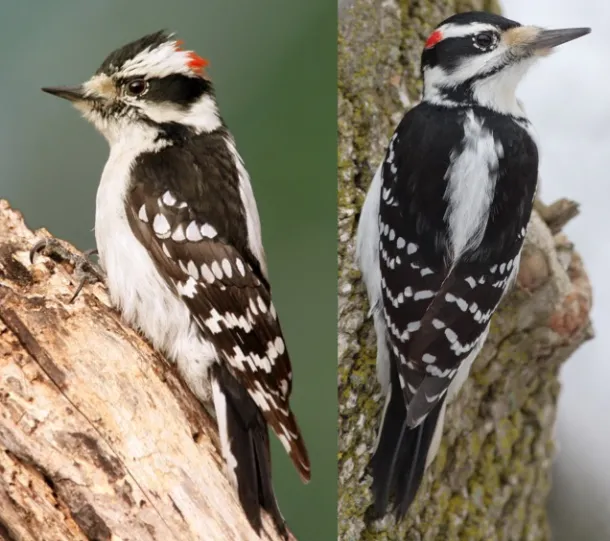
The Hairy Woodpecker is a medium-sized woodpecker that is found in eastern North America. They have black and white plumage, and a red crest. They are the only woodpecker in North America with feathers on their feet. These feathers help them to cling to trees as they peck for insects.
Hairy Woodpeckers are also known to eat berries, fruits, and nuts.
The Hairy Woodpecker is a protected bird in Connecticut. If you see one, be sure to take a picture! They are a beautiful sight. But remember, don’t get too close. These birds are wild and can be dangerous if they feel threatened. Enjoy them from a distance and appreciate their beauty!

Downy Woodpeckers
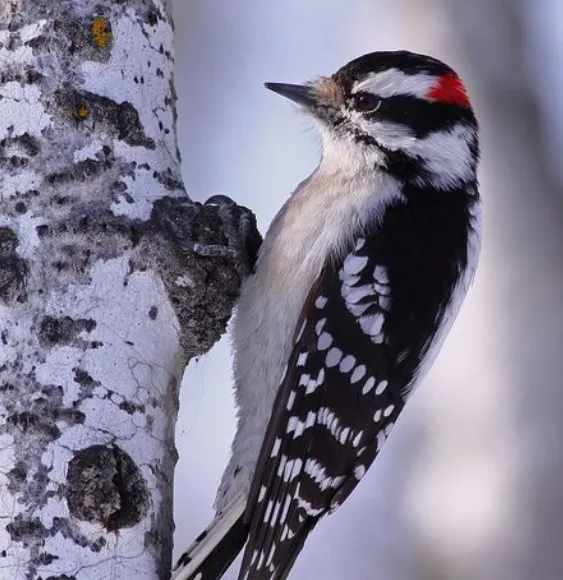
The Downy Woodpecker is the smallest woodpecker in North America. They are around six inches long and have a wingspan of about 11 inches. They weigh between one and two ounces. Downy Woodpeckers are black and white with a red patch on their head.
They have a short, chubby bill and short legs. Their tail is black with white bars. Downy Woodpeckers live in woods and forest edges.
They eat insects, larvae, and spiders. They also eat berries and nuts. Downy Woodpeckers are good at finding food under the bark of large trees.
They use their beak to peck holes in the bark to find food. Downy Woodpeckers can also fly quickly. They are able to fly up to 25 miles per hour. Downy Woodpeckers can be found in all of the lower 48 states.
Downy woodpeckers are common across North America and can be found in nearly every state except Hawaii. These small birds have black-and-white plumage with a red cap and are identifiable by their long, straight bill. They use their strong bills to hammer into dead trees in search of insects, larvae, and spiders.
Downy woodpeckers can also fly quickly; they have been known to reach speeds up to 25 miles per hour. These birds live in a variety of habitats, including coniferous and deciduous forests, as well as woodlands and even residential areas.
Downy woodpeckers eat a variety of foods, including insects, larvae, spiders, fruits, and nuts. They store food in crevices and cracks in trees to access during the winter months.
These birds are monogamous and typically mate for life. The average lifespan of a downy woodpecker is six years.

Pileated Woodpeckers
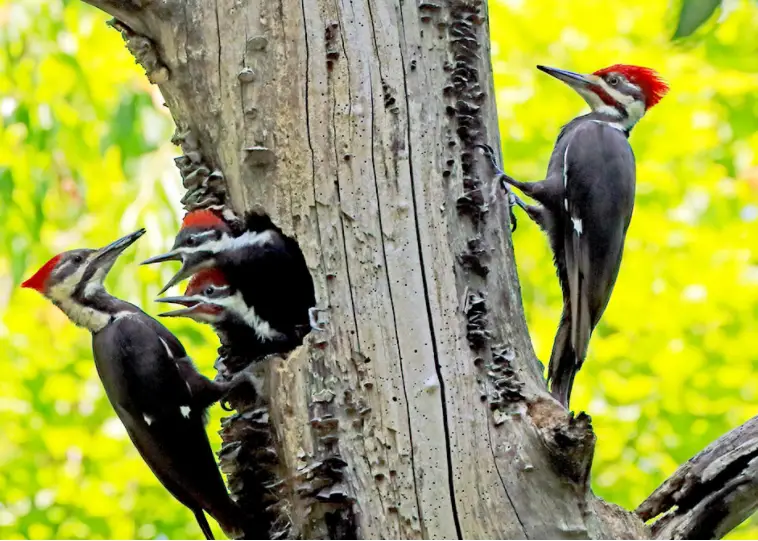
The Pileated Woodpecker is the largest woodpecker in Connecticut. They have a black body, white stripes down their sides, and a red crest on their head. They are also one of the most recognizable birds in the state.
Pileated Woodpeckers are very distinctive-looking birds. They are easily recognized by their black body, white stripes down their sides, and red crest on their head. They are the largest woodpeckers in Connecticut and are very easy to spot.
Pileated Woodpeckers are known for their loud calls. They make a variety of different sounds, including hoots, barks, and yelps. They are also known for their drumming. This is when they rapidly peck on trees or other objects.
Pileated Woodpeckers are very important to the ecosystem. They help control insect populations, and their holes provide homes for other animals. They are a vital part of the forest community.
If you’re lucky enough to see a Pileated Woodpecker in Connecticut, be sure to take note of their unique characteristics.

Related post: Types of Woodpeckers in Delaware
Yellow-bellied Sapsucker
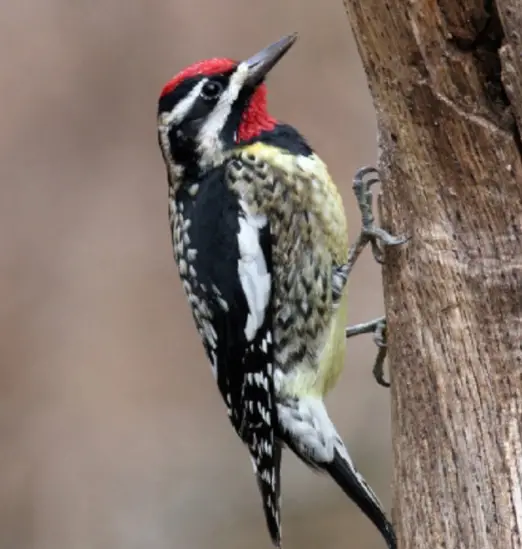
The Yellow-bellied Sapsucker is a medium-sized woodpecker with a black back, wings, and tail. The head is red with a white throat and breast. Males have a yellow belly while females have a white belly. This bird can be found in deciduous forests of eastern North America where it drills small holes in tree bark to extract sap. It also eats insects and fruit. The Yellow-bellied Sapsucker is a year-round resident in Connecticut.
Yellow-bellied Sapsuckers are easy to identify due to their black and white plumage, redhead, and yellow belly. They can be found in deciduous forests throughout eastern North America. These birds are unique in that they drill small holes in tree bark to extract sap. They also eat insects and fruit. The Yellow-bellied Sapsucker is a year-round resident in Connecticut.

Red-bellied Woodpeckers
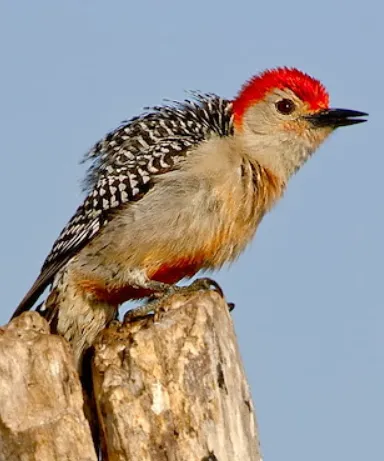
The red-bellied woodpecker is a common bird in Connecticut. It is a small to medium-sized woodpecker with a black and white striped back, wings, and tail.
The belly and head are red, and there is a white line running down the center of the back.
The adult male has a red cap, while the female has a red nape. Both sexes have a white throat and black cheeks. The bill is black, and the legs and feet are gray.
The red-bellied woodpecker feeds on insects, spiders, fruits, and nuts. It often climbs trees in search of food. It also feeds on the ground by picking up dead leaves and other debris in search of insects.
The red-bellied woodpecker is a cavity nester, meaning it excavates a hole in a tree to make its nest. Both the male and female help to excavate the nest.
Once the nest is complete, the female lays anywhere from three to eight eggs. incubation lasts about two weeks, and both parents help to care for the young. After about six weeks, the young woodpeckers leave the nest and begin to fend for themselves.
The red-bellied woodpecker is a common bird in Connecticut and can be found in forests, parks, and suburban areas. It is an interesting bird to watch, and it is fun to listen to its loud calls. If you are lucky, you may even see one feeding on the ground or climbing a tree in search of food.

Northern Flicker
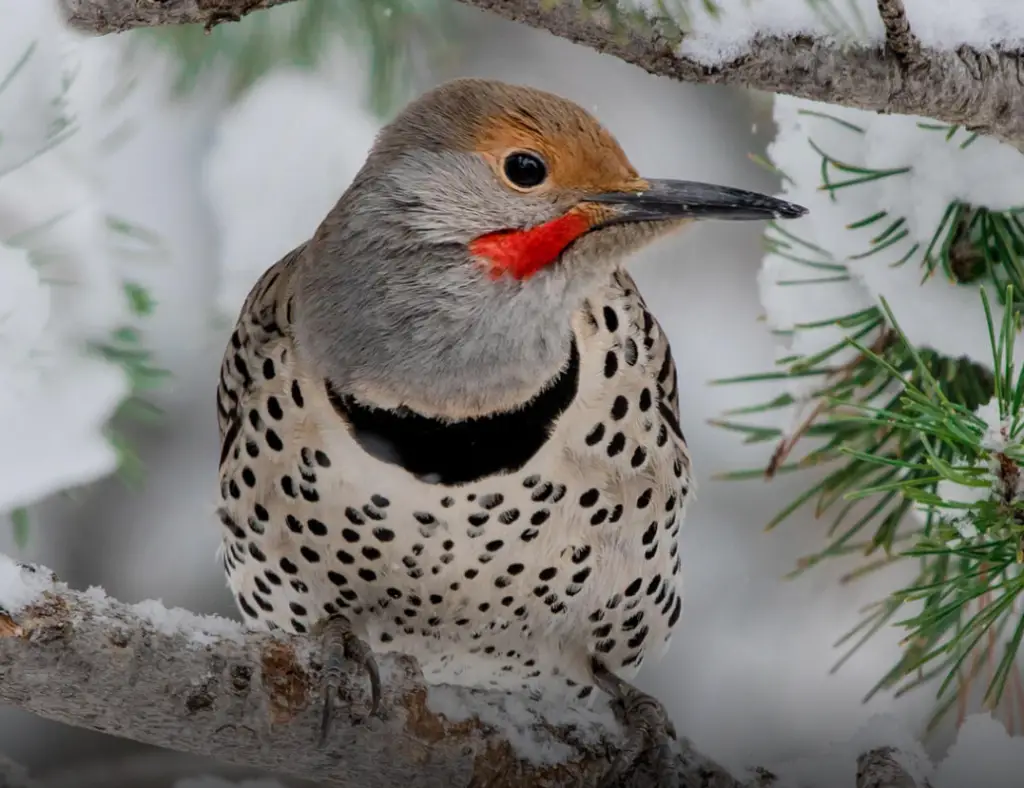
The Northern Flicker is a medium-sized woodpecker found in North America. They have a brown back and wings, with black spots on the shoulder and white stripes down the sides of their head. Their underparts are light-colored, with a red crescent mark on their breast. Males have a black mustache stripe, while females have a red stripe.
Northern Flickers are the only woodpecker in North America that regularly feeds on the ground, where they eat ants and other insects. They also forage in trees, where they eat sap, fruit, and nuts. Northern Flickers are cavity nesters, meaning they build their nests in tree cavities or abandoned birdhouses.
Northern Flickers are generally shy birds but can be very vocal when alarmed. They have a loud “wicka-wicka-wicka” call that can be heard from quite a distance. Northern Flickers are also known for their woodpecker drumming, which is used to mark territory or attract mates.
Northern Flickers are common throughout much of their range and are considered a Species of Least Concern by the IUCN. They make great backyard birds, as they are easy to attract with suet bird feeders and woodpecker blocks.

What does it mean when woodpeckers pecking at your house?
There are a few different interpretations of this phenomenon. One belief is that the woodpecker is trying to tell you something. Pecking could be a way of communicating a message, like alerting you to a fire or danger. Another more spiritual explanation is that the woodpecker is actually trying to get your attention so that you’ll pay attention to your surroundings and be more aware of what’s happening around you.
Whatever the reason, if you have a woodpecker that’s been pecking at your house, it’s important to try and figure out what it is trying to tell you. If the bird is persistent, it might be worth calling an expert to see if they can help decode the message. In the meantime, keep your eyes and ears open for any other clues the bird might be trying to give you!

An avid ornithologist, zoologist and biologist with an unwavering passion for birds and wild animals.
Dr. Wilson’s journey in ornithology began in childhood and led him to obtain a Ph.D. in Ornithology from the prestigious Avian Research Institute. He has worked closely with renowned experts in the field and conducted extensive research and field studies globally.

